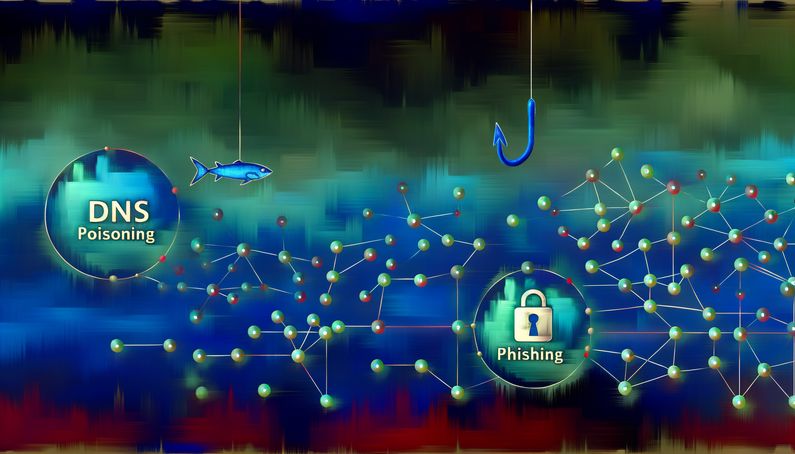
Understanding the Microsoft Stream Classic Domain Hijacking Incident
The recent hijacking of the Microsoft Stream Classic domain has sent ripples through the cybersecurity community. This incident, likely due to DNS poisoning, exposes the weaknesses in the Domain Name System (DNS) that attackers can exploit to mislead users into visiting harmful sites. The legitimate URL https://web.microsoftstream.com has been compromised, redirecting users to phishing sites, which poses a significant threat to individuals and organizations using Microsoft Stream Classic for video content management. This situation highlights the critical need for strong DNS security measures and increased user awareness to prevent such breaches.
What is DNS Poisoning?
DNS poisoning is a cyberattack that manipulates the Domain Name System (DNS) to redirect users to fraudulent websites. Imagine trying to call a friend, but your phone’s contact list has been tampered with, so you end up calling a scammer instead. That’s similar to what happens in DNS poisoning. Attackers corrupt the DNS cache, causing the DNS server to return an incorrect IP address for a domain name. In the case of Microsoft Stream Classic, the URL https://web.microsoftstream.com was legitimate but now redirects to a phishing site, indicating a potential DNS poisoning attack.
How Do These Attacks Work?
DNS poisoning can occur through techniques like cache poisoning and spoofing. Cache poisoning involves inserting false DNS records into a DNS resolver’s cache, while spoofing involves sending fake responses to DNS queries. Attackers might exploit DNS protocol vulnerabilities or use social engineering to access DNS servers. Once the DNS cache is poisoned, users trying to visit a legitimate site are redirected to a malicious one, where attackers can steal sensitive information or distribute malware.
Impact on Users
The hijacking of the Microsoft Stream Classic domain has serious implications for users who rely on the platform for video content management. Users attempting to access Stream Classic risk being redirected to phishing sites, where their credentials and personal information can be compromised. This threat extends beyond individual users to organizations using Stream Classic as part of their Office 365 suite, raising concerns about data breaches and unauthorized access to sensitive information.
How to Stay Safe
To mitigate risks associated with DNS poisoning and domain hijacking, organizations should adopt robust security measures. These include using DNSSEC (Domain Name System Security Extensions) to authenticate DNS responses and prevent tampering, regularly updating DNS server software to patch vulnerabilities, and monitoring DNS traffic for suspicious activity. Educating users about phishing dangers and the importance of verifying website URLs can also help reduce the risk of falling victim to such attacks.
SharePoint and the Attack
The compromised Microsoft Stream Classic domain has been used to spam SharePoint sites, exploiting the integration between Stream and SharePoint in the Microsoft 365 ecosystem. Attackers leverage this integration to distribute phishing links and malicious content through SharePoint, a widely trusted collaboration platform. This tactic exploits the trust users place in SharePoint as a legitimate Microsoft service, increasing the likelihood of successful phishing attacks.
Exploitation Techniques
Attackers use various methods to exploit SharePoint sites, such as embedding malicious links in shared documents, using compromised accounts to distribute phishing emails, and exploiting vulnerabilities in SharePoint’s security settings. By embedding phishing links in SharePoint documents or lists, attackers can deceive users into clicking on them, leading to credential theft or malware installation. Additionally, attackers may use compromised accounts to send phishing emails from within the organization, bypassing external email filters and increasing the chances of success.
Microsoft’s Response
In response to the hijacking of the Microsoft Stream Classic domain and the subsequent spamming of SharePoint sites, Microsoft has implemented several security measures to protect users. These include enhancing the security of the Microsoft 365 ecosystem, providing guidance on identifying and mitigating phishing threats, and working with domain registrars to secure compromised domains. Microsoft also encourages users to report suspicious activity and provides tools for monitoring and responding to security incidents.
User Education
Microsoft emphasizes the importance of user education and awareness in combating phishing and domain hijacking threats. By providing resources and training on recognizing phishing attempts and understanding the risks associated with compromised domains, Microsoft aims to empower users to protect themselves and their organizations. This includes promoting best practices for password management, encouraging the use of multi-factor authentication, and highlighting the importance of verifying URLs before clicking on links.
Looking Ahead
The hijacking of the Microsoft Stream Classic domain and the exploitation of SharePoint sites highlight the evolving nature of cyber threats and the need for continuous vigilance. As attackers develop more sophisticated techniques, organizations must adapt their security strategies to address emerging risks. This includes investing in advanced threat detection and response capabilities, collaborating with industry partners to share threat intelligence, and fostering a culture of security awareness among employees.
Recommendations
To effectively combat the threat of domain hijacking and phishing, organizations should:
- Implement DNSSEC to secure DNS communications and prevent tampering.
- Regularly update and patch DNS server software to address vulnerabilities.
- Monitor DNS traffic and SharePoint activity for signs of compromise.
- Educate employees on recognizing phishing attempts and verifying URLs.
- Use multi-factor authentication to protect user accounts and sensitive information.
By adopting these measures, organizations can enhance their security posture and reduce the risk of falling victim to domain hijacking and phishing attacks.
Final Thoughts
The hijacking of the Microsoft Stream Classic domain and its exploitation to spam SharePoint sites serve as a stark reminder of the evolving nature of cyber threats. As attackers continue to develop more sophisticated techniques, it is crucial for organizations to adapt their security strategies accordingly. Implementing advanced threat detection, fostering a culture of security awareness, and collaborating with industry partners for threat intelligence sharing are essential steps in combating these threats. By staying vigilant and proactive, organizations can better protect themselves against the risks of domain hijacking and phishing attacks.



